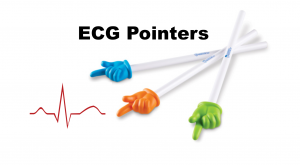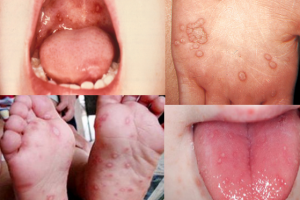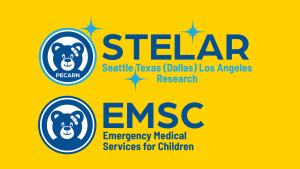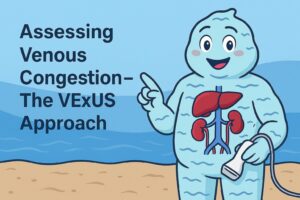Originally published at CoreEM.net, dedicated to bringing Emergency Providers all things core content Emergency Medicine available to anyone, anywhere, anytime. Reposted with permission.
Follow Dr. Swaminathan and CORE EM on twitter at @EMSwami and @Core_EM
Written by Rich White, MD and Edited by Anand Swaminathan, MD
Definition: Excessive, abnormal cortical neuronal activity resulting in a variety of physical symptoms.
- Provoked seizure: An acute symptomatic seizure that occurs at the time of or within 7 days of an acute neurologic, systemic, metabolic, or toxic insult (Huff 2014).
- Unprovoked seizure: A seizure occurring in the absence of acute precipitating factors and includes remote symptomatic seizures, as well as seizures that are not established to have a cause.
Seizure classification:
Questions that can help guide your ED management decisions
- Is the patient back to his baseline neurological status?
- Get collateral information to ensure an accurate answer
- Is this a first time seizure?
- Be aware that 50% of “first time seizures” have had prior events
- Consider Syncope!
- Is the seizure provoked or unprovoked?
Differential Diagnosis
| Medications (partial list) | Vital Signs | Withdrawal Syndromes | CNS Abnormalities | Infectious | Metabolic |
| Bupropion | Hypoxia | Alcohol | Traumatic Brain Injury | Meningitis | Hepatic Encephalopathy |
| Camphor | Hyperthermia | AEDs | SAH | Encephalitis | Hypocalcemia |
| Clozapine | Hypertensive Emergency | Benzodiaz-epines | CVA | CNS Abscess | Hypercalcemia |
| Cyclosporine | Hypoglycemia | Baclofen | Traumatic ICH | Hyponatremia | |
| Fluoroquinolones | Hyperglycemia | Space Occupying Lesion (i.e. Tumor) | Uremia | ||
| Imipenem | |||||
| Isoniazid | |||||
| Lead | |||||
| Lidocaine | |||||
| Lithium | |||||
| Metronidazole | |||||
| Theophylline | |||||
| TCAs |
Seizure Classification

ED Workup of 1st Time Seizure
Non-Contrast Head CT (NCHCT) (Rosen’s 2014)
- Unprovoked, back at baseline: NCHCT not indicated
- Provoked or unprovoked, NOT at baseline: Obtain NCHCT
- NCHCT abnormal in up to 80% of patients with focal neurological deficit after seizure (Harden 2007)
- Provoked and back at baseline:
- No definitive recommendations
- NCHCT unlikely to have high-yield
- If provoking factor addressed and patient can reliably follow up, may consider outpatient imaging
Electroencephalogram (EEG)
- Provoked or unprovoked, NOT at baseline = Emergent EEG
- Concern for status (nonconvulsive) epilepticus
- Mortality rates estimated to be as high as 40% (Tardy 1995)
- If patient returns to baseline, EEG can be deferred to outpatient
Electrocardiogram
- Always obtain an ECG in first time seizure patients
- The challenge: Significant overlap in presentation with syncope often having myoclonic or tonic jerks (12-75%) due to cerebral hypoperfusion (Bergfeldt 2003)
- The importance: Misdiagnosing syncope as seizure can lead to application of incorrect treatment and, thus mortality and morbidity
- Can’t miss EKG findings (Bergfeldt 2003)
- Wolff-Parkinson-White syndrome
- Prolonged QT interval (especially in younger patients)
- Brugada syndrome: RBBB pattern with STE in V1-V3
- Hypertrophic cardiomyopathy
- Arrhythmogenic RV dysplasia: Negative T waves in V1-V3 with or without epsilon waves
- Bi/tri fascicular blocks or undetermined intraventricular conduction abnormalities
- High degree AV blocks
Lumbar Puncture
- Indicated if there’s a concern for a CNS infection (i.e. meningitis, encephalitis)
- Lower threshold to LP if patient is immunocompromised (increased rate of CNS toxoplasmosis, CNS abscess etc)
- Provoked or unprovoked
- At baseline: No LP
- NOT at baseline: Obtain LP
Starting AEDs
- Current best literature does not uniformly recommend starting AEDs after a first time seizure (Knake 2009)
- Early treatment does not seem to provide protection from future seizures.
Take home points:
- It is critical to determine if the event was a seizure or syncope. Look for a post-ictal period and get an EKG in all patients
- Review the differential for seizure in all patients, particularly those with a 1st time seizure. Consider vital sign abnormalities, toxic/metabolic, CNS and infectious causes
- In 1st time seizures, always carefully consider whether the seizure was provoked or unprovoked and whether the patient is back at his baseline as this can drastically effect management.
- There is no specific testing that is required in all patients with a 1st time seizure. Testing is based on your history and physical examination
Read More
EM Lyceum: Seizure, Answers
LITFL: Seizures
EM Docs: Treatment of seizures in the Emergency room: pearls and pitfalls
References
Bergfeldt, L. Differential diagnosis of cardiogenic syncope and seizure disorder. Heart 2003; 89(3): 353-358. PMID: 1767616
Harden CL et al. Reassessment: neuroimaging in the emergency patient presenting with seizure (an evidence-based review): report of the Therapeutics and Technology Assessment Subcommittee of the American Academy of Neurology. Neurology 2007; 69 (18): 1772-1780. PMID 17967993
Huff JS et al. Clinical policy: critical issues in the evaluation and management of adult patients presenting to the emergency department with seizures. Ann Emerg Med 2014; 63 (4): 437-447.e415. PMID 24655445
Knake S, et al. Status epilepticus: a critical review. Epilepsy Behav 2009; 15 (1): 10-14. PMID 19236943
McMullan J et al. Seizure disorders, in Marx JA, Hockberger RS, Walls RM, et al (eds): Rosen’s Emergency Medicine: Concepts and Clinical Practice, ed 8. St. Louis, Mosby, Inc., 2010, (Ch) 102: p 1375-1385.
Raskin NH et al. Neurologic Disorders in Renal Failure. NEJM 1976; 294 (3): 143-148. PMID 1105188
Tardy B et al. Adult first generalized seizure: etiology, biological tests, EEG, CT scan, in an ED. Am J Emerg Med 1995; 13 (1): 1-5. PMID: 7832926









1 thought on “CORE EM: Approach to Adult First Time Seizure in the ED”
Pingback: Nursing FOAMed Review #8 (Feb 1st - Feb 11th) - Code Blue LLC